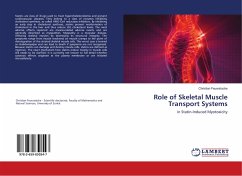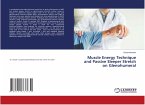Statins are class of drugs used to treat hypercholesterolemia and prevent cardiovascular diseases. They belong to a class of enzymes inhibiting cholesterol synthesis, so called HMG-CoA reductase inhibitors. By inhibiting an early step in cholesterol synthesis, statins prevent neoformation of cholesterol in the liver and thus reduce LDL cholesterol levels. The most adverse effects reported are muscle-related adverse events and are generally described as myopathies. Myopathy is a muscular disease, affecting skeletal muscles by destroying its structural integrity. The symptoms range from muscle weakness on muscle cramps to the point of disintegration of the striated skeletal muscle cells. This worst case is termed as rhabdomyolyse and can lead to death if symptoms are not recognized. Because statins can damage and destroy muscle cells, statins are defined as myotoxic. The exact mechanism how statins induce toxicity in muscle cells still needs to be clarified. It is currently not known to full detail whether cytotoxic effects originate at the plasma membrane or are initiated intracellularly.
Bitte wählen Sie Ihr Anliegen aus.
Rechnungen
Retourenschein anfordern
Bestellstatus
Storno








